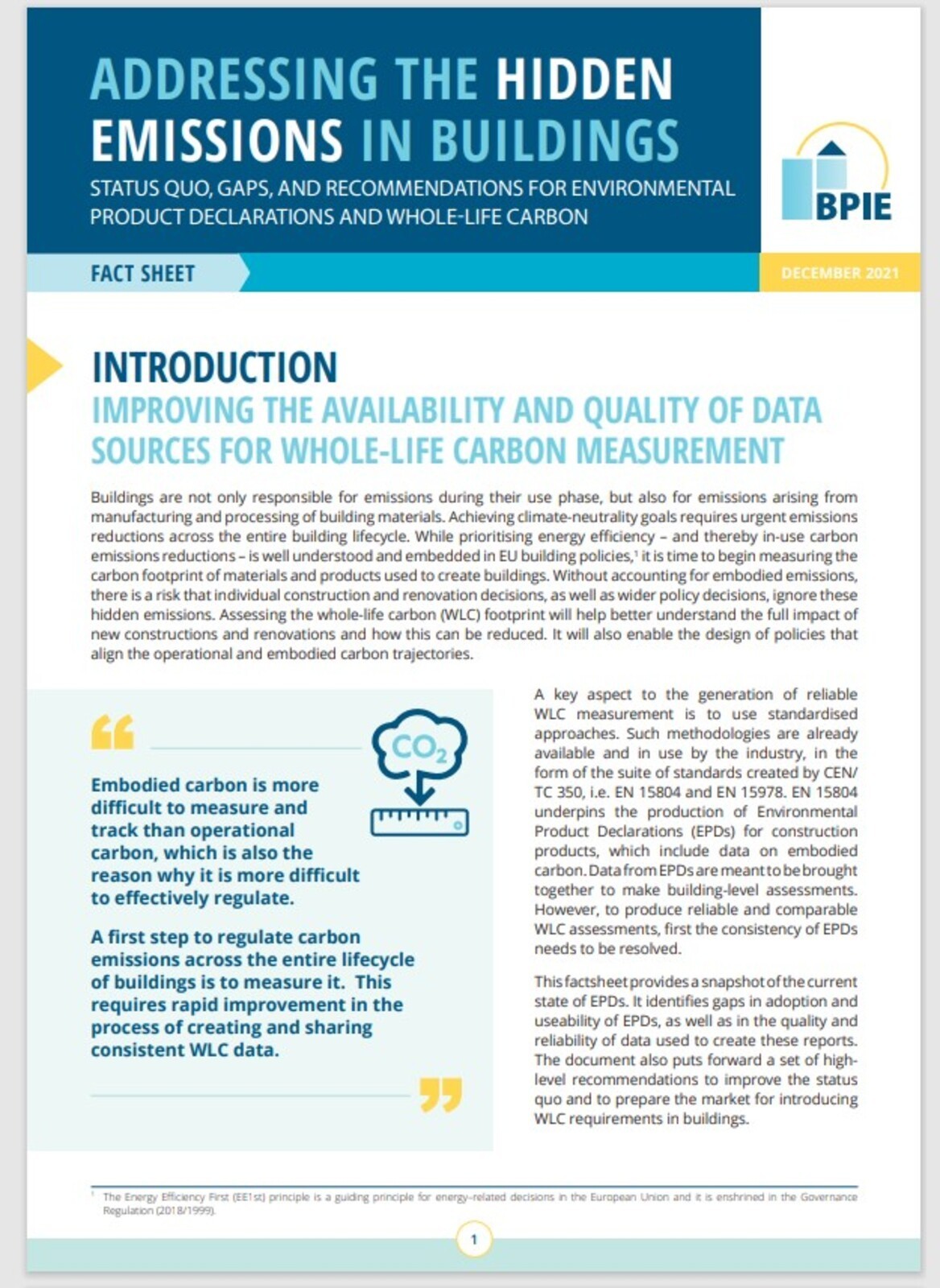Addressing the Hidden Emissions in Buildings: Status quo, gaps and recommendations for Environmental Product Declarations and Whole-Life Carbon
Maria Stambler

Background:
Buildings are not only responsible for emissions during their use phase, but also for emissions arising from manufacturing and processing of building materials. Achieving climate neutrality goals will require urgent emissions reductions across the entire building lifecycle. It is time to begin measuring the carbon footprint of materials and products used to create buildings. Without accounting for embodied emissions, there is a risk that individual construction and renovation decisions, as well as wider policy decisions, ignore these hidden emissions.
Assessing the whole-life carbon (WLC) footprint will help better understand the full impact of new constructions and renovations and how these can be reduced. It will also enable the design of meaningful policies that align the operational and embodied carbon trajectories. A key aspect to generate reliable WLC measurement is to use standardised approaches. Such methodologies are already available, and in use by the industry, in the form of the suite of standards created by CEN/TC 350, i.e. EN 15804 and EN 15978. EN 15804 underpins the production of Environmental Product Declarations (EPDs) for construction products, which include data on embodied carbon. Data from EPDs can be brought together to make building-level assessments. However, to produce reliable and comparable WLC assessments, the consistency of EPDs will need to be first resolved.
About this factsheet:
This factsheet provides a snapshot of the current state of Environmental Product Declarations (EPDs). It identifies gaps in adoption and useability of EPDs, as well as in the quality and reliability of data used to create these reports. The document also puts forward a set of high-level recommendations to improve the status quo and to prepare the market for introducing WLC requirements in buildings.



